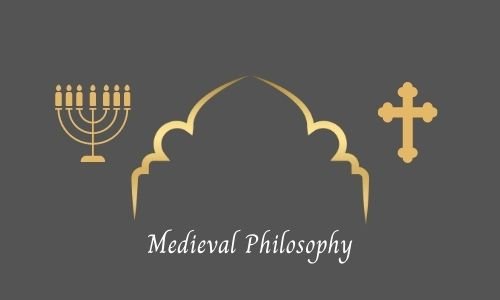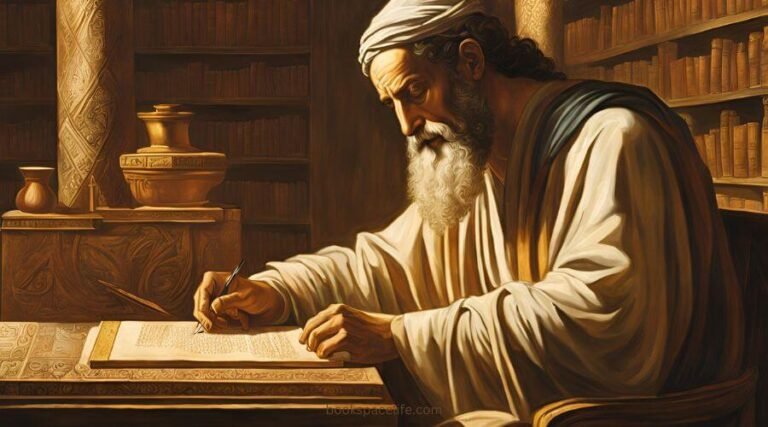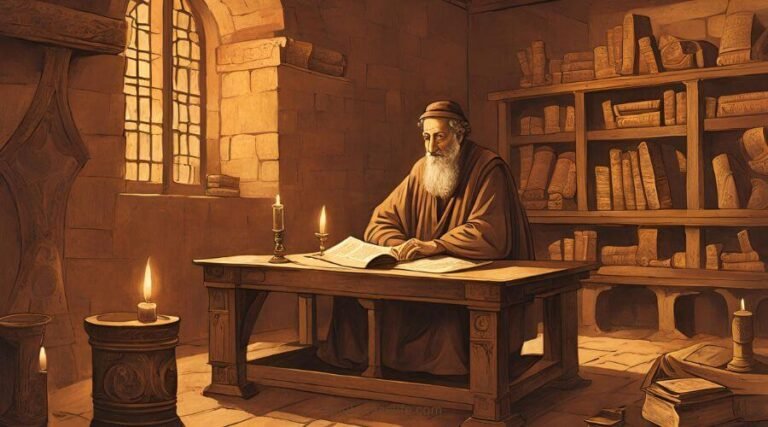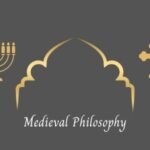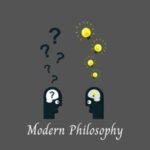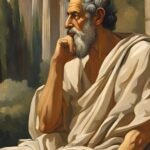I
Philo of Alexandria
Table of Contents
Isaac Luria: The Mystic Philosopher Who Revolutionized Kabbalah
Isaac Luria, often referred to as “The Ari” (an acronym for Ashkenazi Rabbi Isaac), was one of the most influential Jewish mystics in history.
His teachings transformed the landscape of Kabbalah, a form of Jewish mysticism, and left an indelible mark on religious thought in the Jewish tradition.
Luria’s ideas on creation, the nature of God, and the role of human beings in the cosmos have inspired countless Jewish thinkers and mystics, and continue to shape the study of Kabbalah to this day.
Despite his relatively short life, Luria’s impact on both Jewish mysticism and Jewish philosophy has been profound.

(1) Early Life and Education
Isaac Luria was born in 1534 in the city of Jerusalem to a family with strong religious and intellectual traditions.
His early years were marked by personal hardship, as his family faced significant financial difficulties.
Luria’s father died when he was still a child, and he was raised by his mother, who, despite their poverty, ensured that he received a thorough education.
Luria demonstrated an extraordinary intellectual capacity from a young age, particularly in the realms of Jewish texts, Talmudic study, and Kabbalah.
At the age of 15, Luria left Jerusalem to study in Egypt, where he was introduced to the world of Jewish mysticism.
He became a student of the renowned Kabbalist Rabbi Chaim Vital, whose influence would shape Luria’s mystical development.
During this time, Luria also engaged deeply with Jewish texts, including the Zohar, the central text of Kabbalistic thought, and the writings of earlier Kabbalists like Rabbi Moses Cordovero.
Luria’s early education in mysticism took a dramatic turn when he began experiencing mystical visions, which he claimed were direct communications with God and angels.
These experiences were formative for Luria, and they helped shape his understanding of the divine and the nature of the cosmos.
Luria’s personal mystical experiences led him to develop a novel system of Kabbalah, which would later be known as Lurianic Kabbalah.
(2) Luria’s Philosophy of Creation
Isaac Luria’s most significant contribution to Jewish mysticism is his philosophical and mystical system, which centered on the ideas of Tzimtzum (contraction), Shevirat ha-Kelim (the shattering of the vessels), and Tikkun (restoration or repair).
These concepts form the backbone of Lurianic Kabbalah and radically transformed how Jews understood the world, creation, and the divine.
(i) Tzimtzum: The Contraction of God’s Presence
One of Luria’s most innovative ideas was the concept of Tzimtzum, which refers to the idea that God, in order to create the world, contracted His infinite light to make space for creation.
Prior to creation, Luria believed that God’s light filled all of existence. However, in order to allow for the existence of a finite world, God withdrew His light, leaving a “void” in which the world could emerge.
This process of contraction was not seen as a literal physical act but as a metaphysical and spiritual one.
Through Tzimtzum, Luria presented a new understanding of the relationship between the divine and the world.
Rather than God’s presence being directly felt in all things, there was now a necessary separation between God and creation, allowing for the existence of the finite world and human free will.
(ii) Shevirat ha-Kelim: The Shattering of the Vessels
Luria’s teachings also introduced the idea of Shevirat ha-Kelim, the “shattering of the vessels.”
According to Luria, after God’s contraction, divine light began to enter the empty space. However, the vessels that were meant to contain this divine light were unable to withstand its power and shattered, causing a cosmic catastrophe.
This event spread divine sparks throughout the world, creating a fractured reality.
The broken vessels and scattered sparks are central to Lurianic Kabbalah. Luria taught that the world is in a state of disrepair, and it is the task of human beings to gather and redeem these scattered divine sparks through acts of righteousness, prayer, and spiritual practice.
This concept of the shattered vessels offered a new way of understanding the world’s imperfections and humanity’s role in rectifying them.
(iii) Tikkun: Restoration and Repair
The final element of Luria’s mystical system is the idea of Tikkun, or restoration. After the shattering of the vessels, the goal of creation is to repair the brokenness and restore harmony to the world.
This process of restoration is not solely in God’s hands but requires human participation.
Through prayer, good deeds, and spiritual elevation, individuals can bring about the repair of the world by retrieving and elevating the divine sparks scattered throughout creation.
For Luria, Tikkun was not just a cosmic process but also a deeply personal one. Every individual’s actions have the potential to either help or hinder the process of restoration.
The idea of Tikkun became central to Lurianic Kabbalah and is still an essential concept in many contemporary Kabbalistic and Jewish mystical practices.
(3) Influence and Impact
Isaac Luria’s ideas quickly spread throughout the Jewish world, particularly among Kabbalists, and had a profound influence on the development of Jewish mysticism.
His teachings were transmitted through his student, Rabbi Chaim Vital, who recorded Luria’s teachings and wrote extensive commentaries on them.
These texts became foundational to the study of Kabbalah, particularly in the Safed Kabbalistic school, where Luria spent much of his life.
Luria’s teachings gave rise to the Lurianic school of Kabbalah, which dominated Jewish mystical thought for centuries after his death.
His ideas about the nature of creation, the relationship between God and the world, and the role of humanity in repairing the world have shaped Jewish mysticism and philosophy to this day.
His influence extended beyond mysticism into the realm of Jewish theology, where his ideas about God’s contraction and the cosmic process of restoration have been explored and reinterpreted by many Jewish thinkers.
Lurianic Kabbalah had a profound impact on both Jewish spirituality and Jewish thought, influencing later Kabbalists, philosophers, and theologians.
His ideas about the cosmic purpose of creation and the human role in restoring divine harmony resonated deeply with Jewish communities, particularly those facing persecution and hardship.
The concept of Tikkun became a source of hope and a call to action, encouraging Jews to work toward the redemption of the world through spiritual practice and ethical behavior.
Luria’s teachings also had a significant impact on Western philosophical and mystical traditions.
His influence can be seen in the writings of German philosopher Franz Rosenzweig, the existentialism of Martin Buber, and the development of Jewish theology in the 20th century.
Even non-Jewish mystics and philosophers, such as Carl Jung, have been influenced by Luria’s ideas on the fragmentation of the soul and the process of healing and integration.
(4) Legacy and Conclusion
Isaac Luria’s life and work marked a transformative moment in the history of Jewish mysticism. His innovative teachings on Tzimtzum, Shevirat ha-Kelim, and Tikkun revolutionized Kabbalistic thought, offering a new framework for understanding creation, divine presence, and the role of humanity in the world.
Despite the brevity of his life—Luria died in 1572 at the age of 38—his influence on Jewish philosophy and mysticism has been lasting and profound.
Luria’s ideas continue to inspire and shape Jewish mysticism, theology, and philosophy today.
His vision of a cosmic process of restoration, in which every individual has a role to play in repairing the world, remains a central tenet of Kabbalistic thought.
Luria’s mystical philosophy has also had an impact on broader philosophical and spiritual traditions, making him one of the most significant Jewish thinkers in history.
Isaac Luria’s mystical vision invites us to see the world not as a static and unchanging reality but as a dynamic, fractured, and incomplete cosmos, in need of healing and restoration. His work continues to challenge and inspire us to engage with the world in ways that are both spiritually profound and ethically transformative, reminding us of the potential for redemption and repair in every moment of our live

